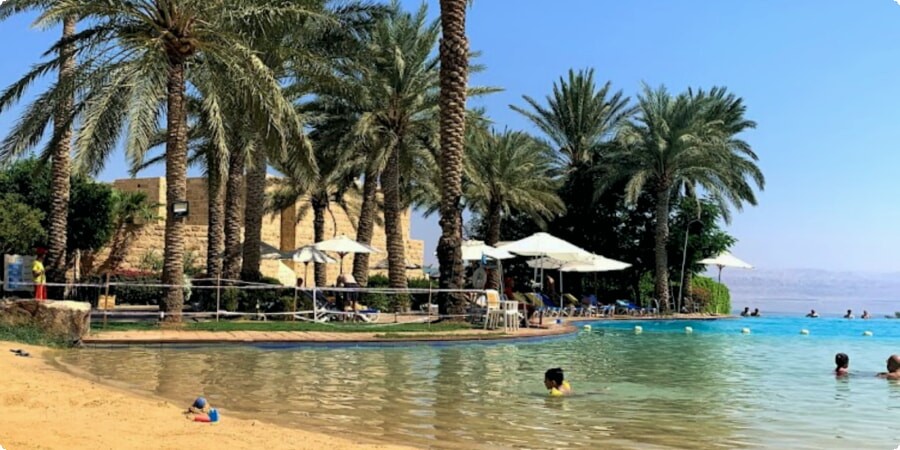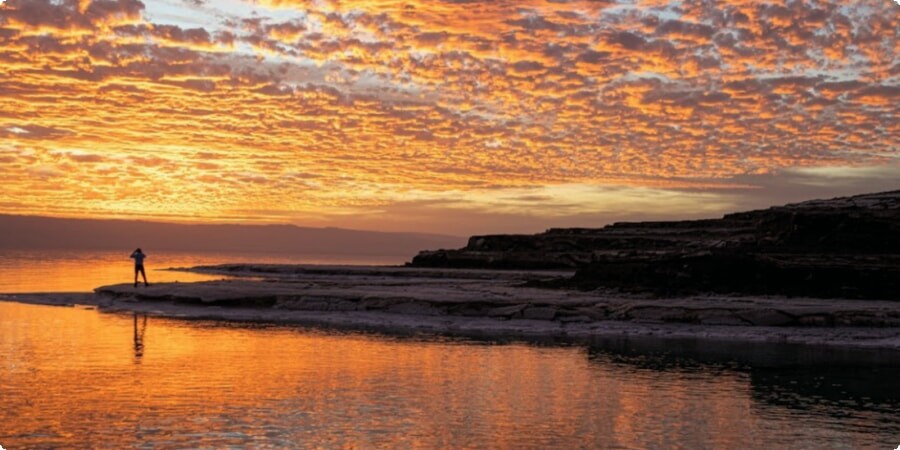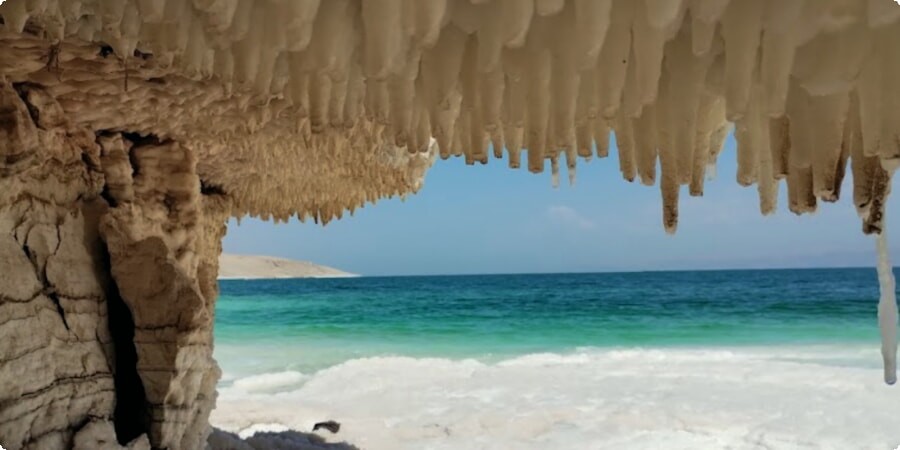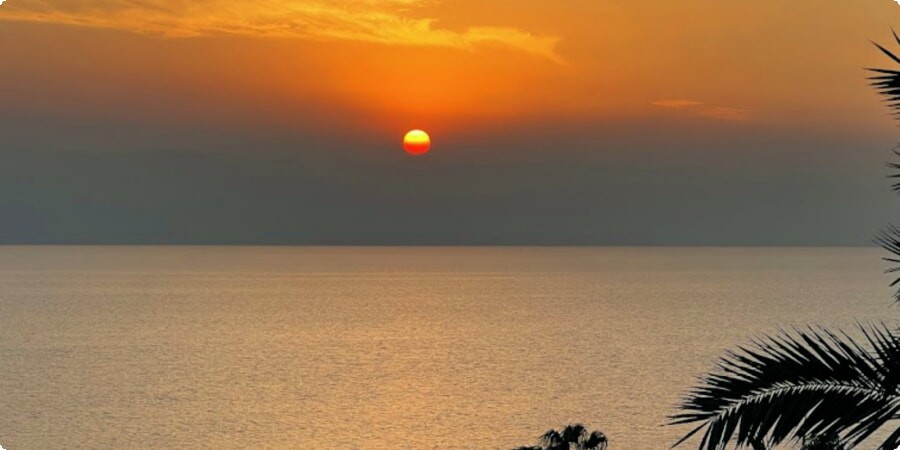Beyond the Surface: Exploring the Geological Marvels of the Dead Sea, Jordan
Welcome to the Dead Sea, a mesmerizing natural wonder that captivates visitors with its unique geological features and breathtaking beauty. Nestled between the rugged mountains of Jordan and Israel, the Dead Sea is unlike any other body of water on Earth. Known for its extreme salinity and mineral-rich waters, this iconic salt lake holds a fascination that extends far beyond its surface.
The Dead Sea's geological marvels tell a story that spans millions of years, from the ancient forces that shaped its basin to the fascinating formations that adorn its shores. In this article, we'll delve deep into the geological wonders of the Dead Sea, exploring the secrets hidden beneath its tranquil surface and uncovering the mysteries of this extraordinary natural phenomenon.
Formation of the Dead Sea Basin
To understand the geological marvels of the Dead Sea, we must first delve into its origins. The Dead Sea basin is part of the larger Great Rift Valley, a tectonic feature that stretches from the Red Sea in the south to Turkey in the north. Millions of years ago, the shifting of tectonic plates caused the Earth's crust to crack, creating a deep depression known as the Dead Sea Rift.
As the rift continued to widen, the land on either side gradually sank, forming the basin that we see today. Over time, water from nearby rivers and streams flowed into the depression, creating a vast inland lake that would eventually become the Dead Sea. Today, the Dead Sea sits at the lowest point on Earth, over 400 meters below sea level, making it a geological marvel in its own right.
Hypersalinity and Mineral Composition
One of the most remarkable features of the Dead Sea is its extreme salinity, which is over ten times higher than that of the world's oceans. This hypersalinity is the result of several factors, including high evaporation rates, minimal rainfall, and the lack of any outlet to the sea.

As water from the Jordan River flows into the Dead Sea, it carries with it a high concentration of minerals, including magnesium, potassium, and calcium. Over time, these minerals accumulate in the water, giving the Dead Sea its characteristic mineral-rich composition. In fact, the Dead Sea is one of the saltiest bodies of water on Earth, with a salt content of around 34%, compared to just 3.5% in the world's oceans.
This unique combination of factors has led to the formation of a variety of mineral deposits along the shores of the Dead Sea, including gypsum, halite, and potash. These minerals have long been prized for their therapeutic properties, attracting visitors from around the world in search of relaxation and rejuvenation.
For travelers arriving at Amman Airport, booking a car rental through LuckyCar is a convenient option, allowing you to explore the geological marvels of the Dead Sea at your own pace and embark on an unforgettable journey through Jordan's breathtaking landscapes.
Salt Formations and Crystalline Structures
As you explore the shores of the Dead Sea, you'll encounter a mesmerizing array of salt formations and crystalline structures that seem to defy the laws of nature. These extraordinary geological features are the result of millennia of evaporation and mineral deposition, sculpting the landscape into a surreal dreamscape of otherworldly beauty.
Salt domes, formed by the gradual accumulation of salt crystals over thousands of years, rise majestically from the desert floor, their smooth, undulating shapes resembling frozen waves in a sea of sand. In some areas, towering pillars of salt reach towards the sky, their intricate crystalline structures catching the light and casting shimmering reflections on the water below.
As you wander along the shoreline, you'll encounter salt channels and ridges carved into the earth by the relentless action of wind and water, creating intricate patterns and textures that are a testament to the power of nature's forces. Each salt formation tells a story of the Dead Sea's ancient past, offering a glimpse into the geological processes that have shaped this remarkable landscape over millions of years.

Sinkholes and Geological Hazards
While the Dead Sea's salt formations may be awe-inspiring, the region is also home to a geological phenomenon that poses a unique challenge to visitors: sinkholes. These mysterious holes, which appear suddenly and without warning, are caused by the gradual dissolution of underground salt deposits, leading to the collapse of the earth above.
Sinkholes can vary in size from small depressions to gaping chasms that swallow entire buildings, posing a serious risk to both people and property. While efforts are underway to monitor and mitigate the effects of sinkhole formation, visitors to the Dead Sea are advised to exercise caution and stay away from areas where sinkholes are known to occur.
Despite the presence of sinkholes, the Dead Sea remains a popular destination for travelers seeking adventure and relaxation amidst its stunning natural beauty. By staying informed and heeding local warnings, visitors can safely enjoy all that the Dead Sea has to offer while marveling at the geological wonders that lie beneath its surface.
Geological Sites and Landmarks
As you journey through the Dead Sea region, you'll encounter a wealth of geological sites and landmarks that showcase the area's rich natural heritage. From towering mountains to ancient salt formations, each site offers a unique glimpse into the geological history of the region and the forces that have shaped its landscape over millions of years.
One of the most iconic geological landmarks in the Dead Sea region is Mount Sodom, a towering salt mountain that rises dramatically from the desert floor. Formed by the gradual deposition of salt crystals over millennia, Mount Sodom is a testament to the incredible power of geological processes and the enduring resilience of the natural world.

Other notable sites include the Lisan Peninsula, a narrow strip of land that juts out into the Dead Sea and provides stunning views of the surrounding landscape, and Lot's Wife Pillar, a towering salt formation that legend has it is the remains of Lot's wife, turned to salt as punishment for looking back at the destruction of Sodom and Gomorrah.
For travelers looking to explore the geological wonders of the Dead Sea region, booking a car rental in Jordan through LuckyCar is a convenient option, allowing you to embark on a self-guided adventure and discover the hidden treasures of this extraordinary landscape at your own pace.
Environmental Challenges and Conservation Efforts
The Dead Sea faces significant environmental challenges, including water level decline, habitat degradation, and the threat of pollution. The diversion of water from the Jordan River, the main source of inflow to the Dead Sea, for agricultural and industrial use has led to a dramatic decrease in water levels, causing the shoreline to recede at an alarming rate.
In response to these challenges, conservation efforts are underway to protect and preserve the fragile ecosystem of the Dead Sea. Initiatives such as the Red Sea-Dead Sea Water Conveyance Project aim to replenish the Dead Sea's water levels by transferring water from the Red Sea, while awareness campaigns and education programs seek to raise awareness about the importance of conserving this unique natural treasure.
Geological Tourism and Educational Opportunities
Geological tourism is a growing trend in the Dead Sea region, with visitors from around the world flocking to explore its geological wonders and learn about the forces that have shaped its landscape. Guided tours led by experienced geologists offer an opportunity to delve deeper into the geological history of the Dead Sea, while educational programs and workshops provide hands-on learning experiences for visitors of all ages.
From hiking along salt trails to exploring ancient geological formations, there are endless opportunities for geological enthusiasts to immerse themselves in the wonders of the Dead Sea region. Whether you're a seasoned geologist or simply curious about the natural world, the Dead Sea offers a wealth of educational and recreational opportunities for visitors to enjoy.

Planning Your Visit to the Dead Sea
Before embarking on your journey to the Dead Sea, it's important to plan ahead to ensure a safe and enjoyable experience. Here are some practical tips to help you make the most of your visit:
- Transportation: If you're arriving in Jordan, consider booking a car rental through LuckyCar for convenient transportation around the Dead Sea region.
- Safety: Be aware of the risks posed by sinkholes and follow local safety guidelines when exploring the shoreline.
- Sun Protection: The Dead Sea region experiences intense sunlight, so be sure to pack sunscreen, a hat, and sunglasses to protect yourself from the sun's rays.
- Respect the Environment: Help preserve the natural beauty of the Dead Sea by minimizing your impact on the environment and adhering to conservation guidelines.
With careful planning and preparation, your visit to the Dead Sea is sure to be an unforgettable experience, filled with wonder, discovery, and awe-inspiring geological marvels.